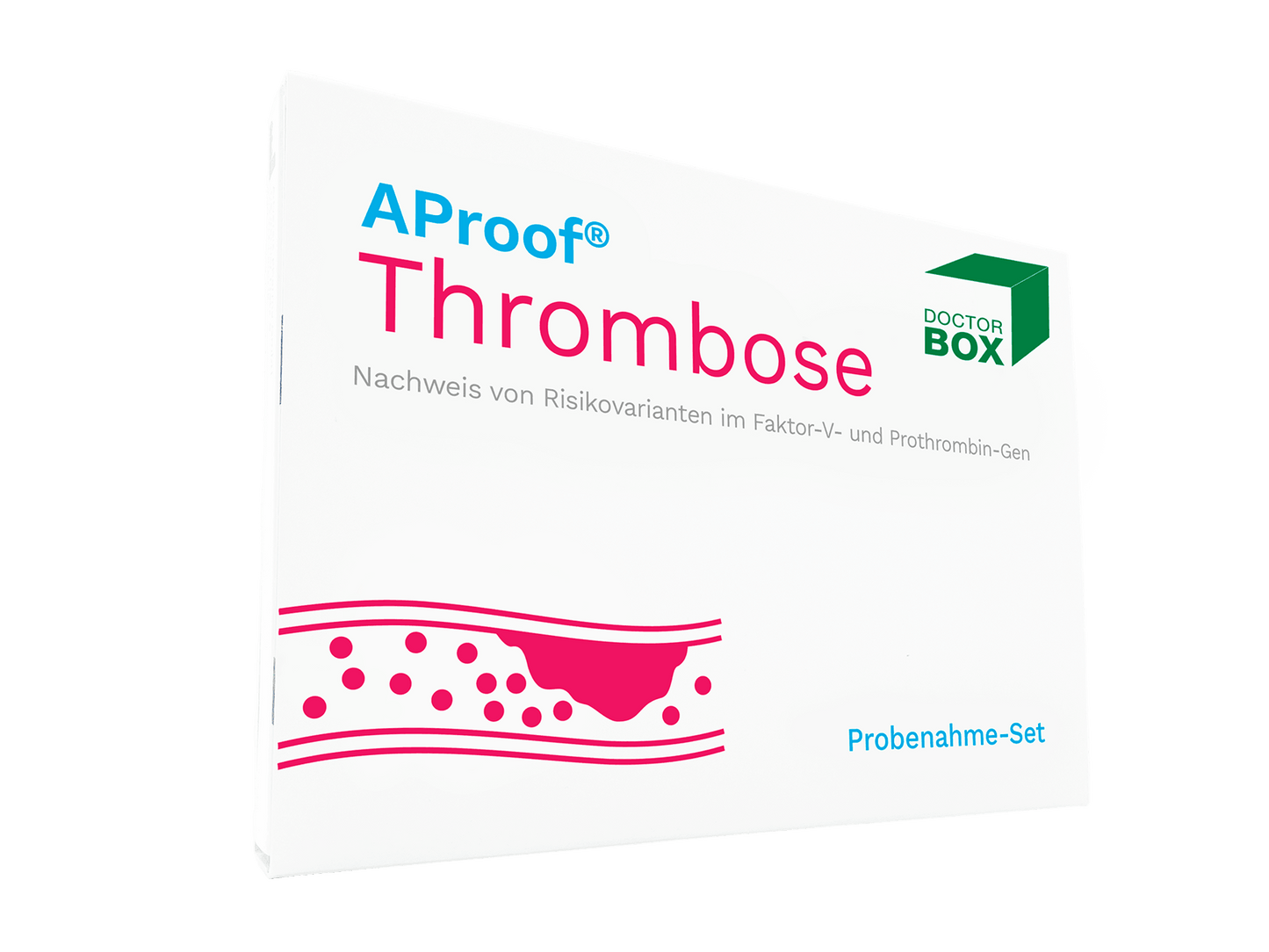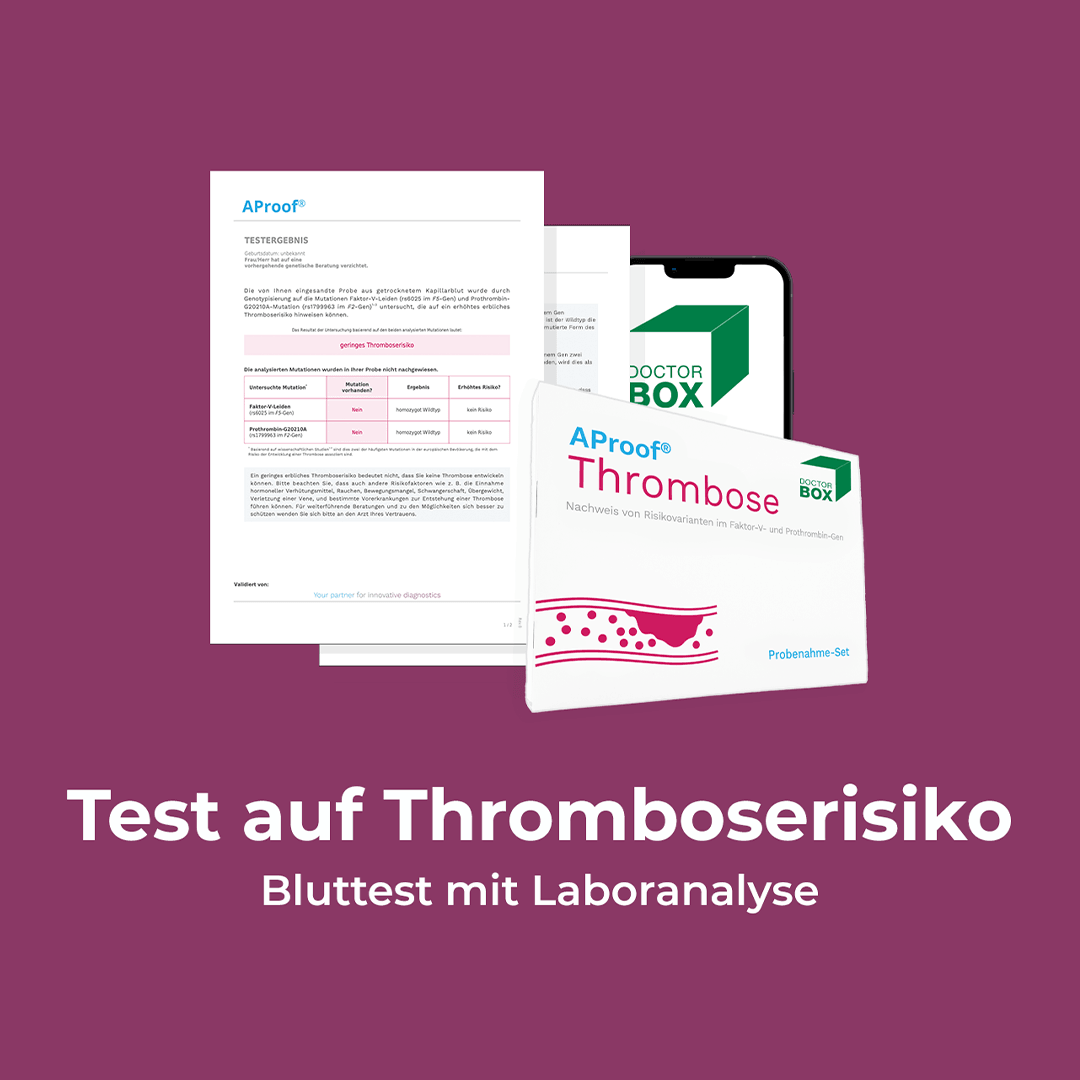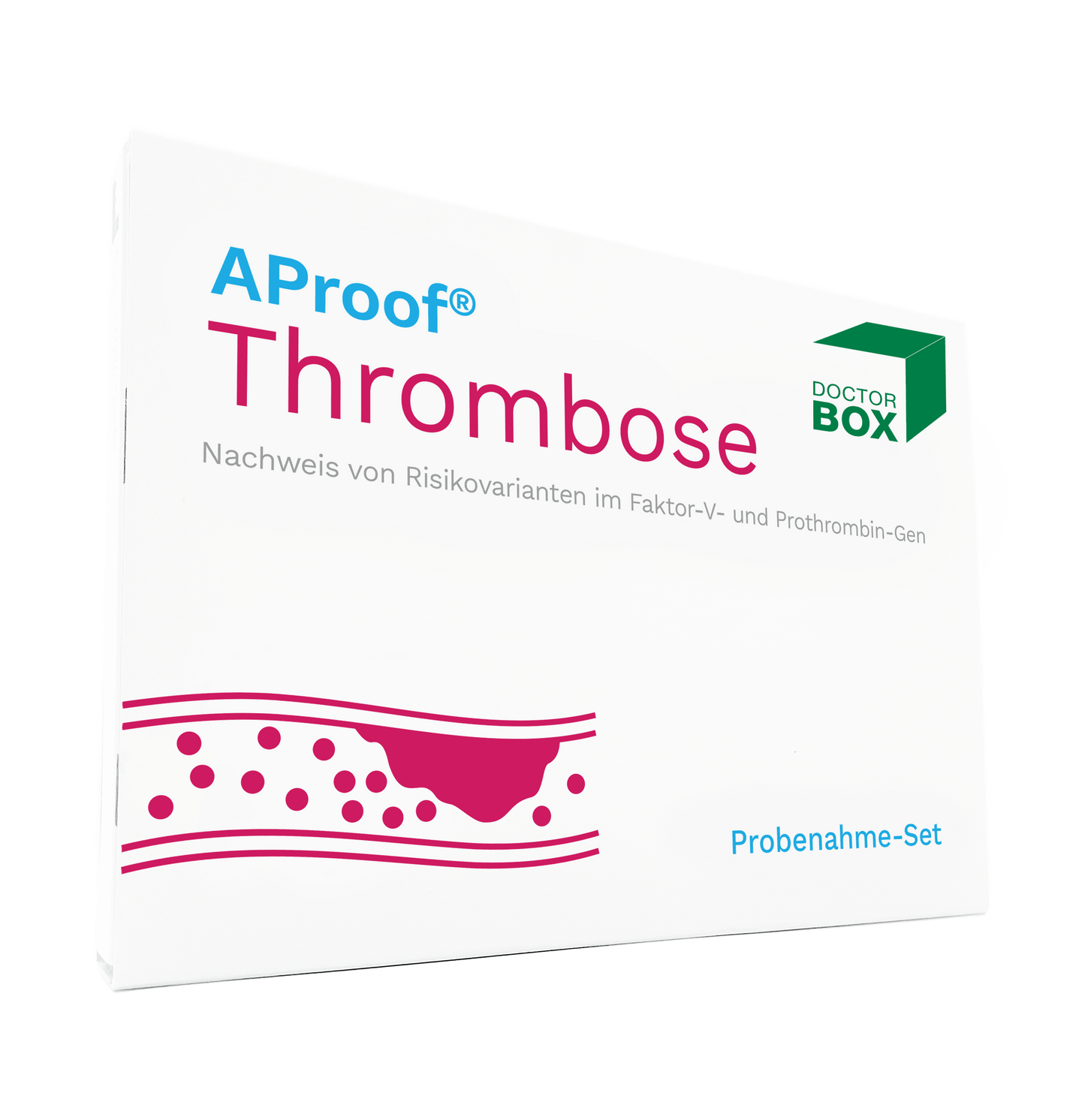



The AProof® Thrombosis test helps you determine your genetic risk of thrombosis using two DNA markers.
The result is available online after registration on our website www.aproof.de and can be printed out.
With the AProof® Thrombosis Test from AP Diagnostics, you receive a kit for collecting, storing and transporting capillary blood. The subsequent laboratory analysis examines genetic traits using qualitative genotyping of the genomic DNA isolated from dry blood. Two of the most common hereditary risk factors, Factor V Leiden and prothrombin G20210A mutation, are characterized.
In accordance with the Genetic Diagnostics Act (§ 10 GenDG), we offer you the option of genetic counseling (content of genetic counseling) by qualified specialists in human genetics. You can activate this by selecting the appropriate product. Your sample will then only be analyzed after the genetic counseling (free appointments). You can subsequently change your selection before sending in the blood sample. If you do not use this option, you expressly waive genetic counseling.
Please note our product-specific information and the disclaimer on the Genetic Diagnostics Act (GenDG) at the end of the product description.
What are the symptoms of thrombosis?
Symptoms of thrombosis depend on the affected area. In general, pain, swelling, redness and warmth can occur in the affected area. Sometimes there is also pain in one leg, chest pain, swelling and warmth in the arm or leg, unilateral numbness or weakness, and a change in the color of the skin on the affected arm or leg.
What are the causes or risk factors for thrombosis?
Basically, two factors determine the probability of developing a thrombosis: the inherited tendency to thrombosis (thrombophilia) and special, acquired risk situations. Acquired factors that may increase the risk of thrombosis include: Personal or family history of thrombosis or pulmonary embolism injury to a vein, e.g. caused by an operation, broken bone or other trauma Inherited bleeding disorders Hormone therapy or birth control pills Lack of exercise, e.g. after surgery or on a long journey Being overweight or obese Certain medical conditions such as cancer, heart disease, lung disease or Crohn’s disease Older age Smoking Pregnancy.
After your sample has been evaluated in the medical laboratory, you will receive your individual findings in digital form via the DoctorBox app.
The results are clearly presented, the further information was formulated in a way that is understandable for "laypersons".

Thrombosis is a vascular disease in which a blood clot (thrombus) forms in a blood vessel. This can lead to restrictions or interruptions in blood flow and thus impair blood flow to organs or tissues. There are two main types of thrombosis:
- Arterial thrombosis: This is a blood clot that blocks an artery. This can block blood flow to the heart and brain, often leading to a heart attack or stroke.
- Venous thrombosis, also known as venous thromboembolism or VTE: This is a blood clot in a vein. A VTE presents as deep vein thrombosis or pulmonary embolism.
Most genetic tests for thrombosis are done by taking a blood sample. The samples are then examined in a laboratory to look for mutations, or changes, in the genes in question. The results of these tests can help to better assess the risk of thrombosis and, if necessary, to take precautions to reduce the risk. These tests are usually performed by a doctor or genetic counselor and may be performed at a hospital, doctor's office, or genetic testing center.
Together with aProof we offer a test for the genetic predisposition for thrombosis including laboratory analysis and human genetic counseling. You will take the sample yourself at home.
- sampling at any time
- the smallest amounts of blood are enough
- Convenient collection due to filter paper card instead of blood tubes
- high reliability of the test
- Analysis in our own laboratory
- Results can usually be called up within 15 working days after receipt of the sample
- Retrieval of results online at any time
- Service hotline for advice and questions ( +49 (0)341 / 697 678 20 )
Here's how it works

carry out sampling
Before you start sampling, please read the enclosed instructions for use carefully.
Scan barcode
Scan the included barcode in the DoctorBox app!
send samples
Pack your sample as instructed. Bring the prepaid envelope to the post office the same day.
your finding
After the laboratory analysis, your test result is sent to your DoctorBox app, your health account. You can see the current status there at any time.





